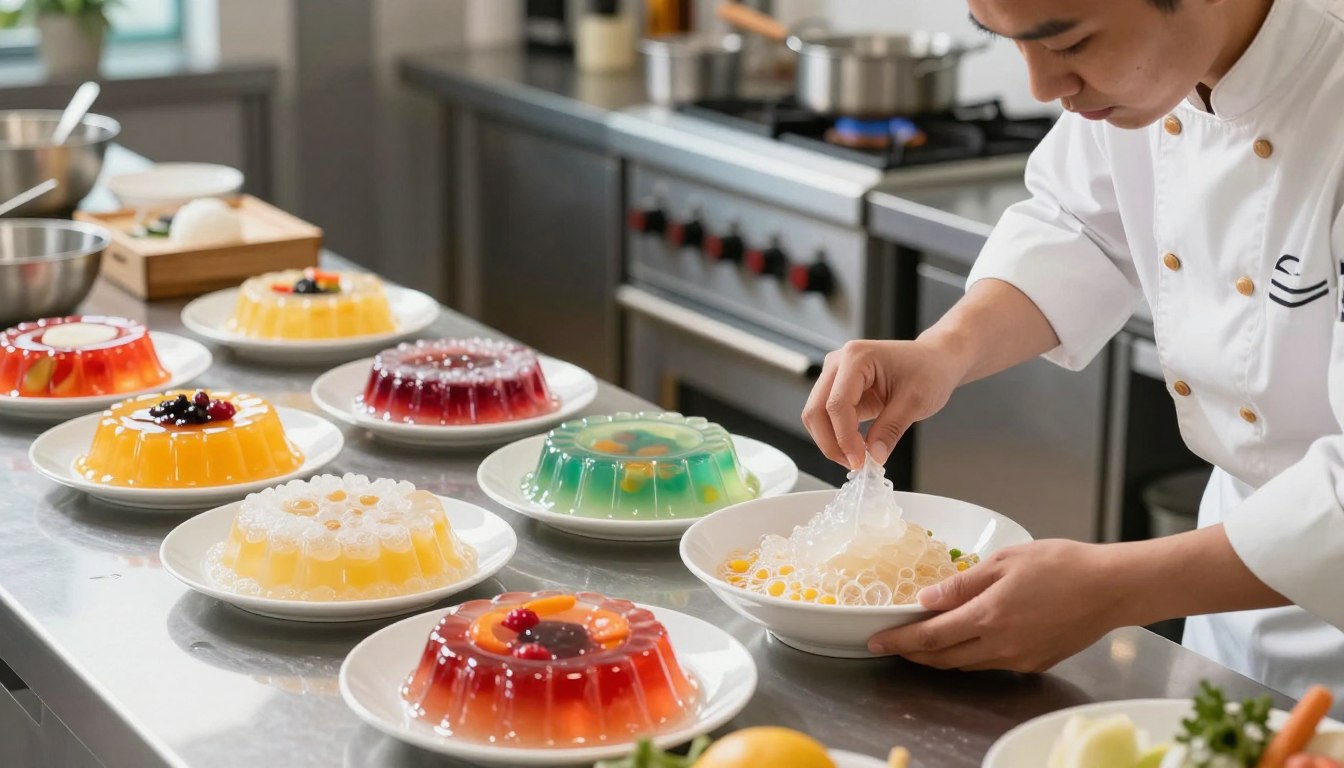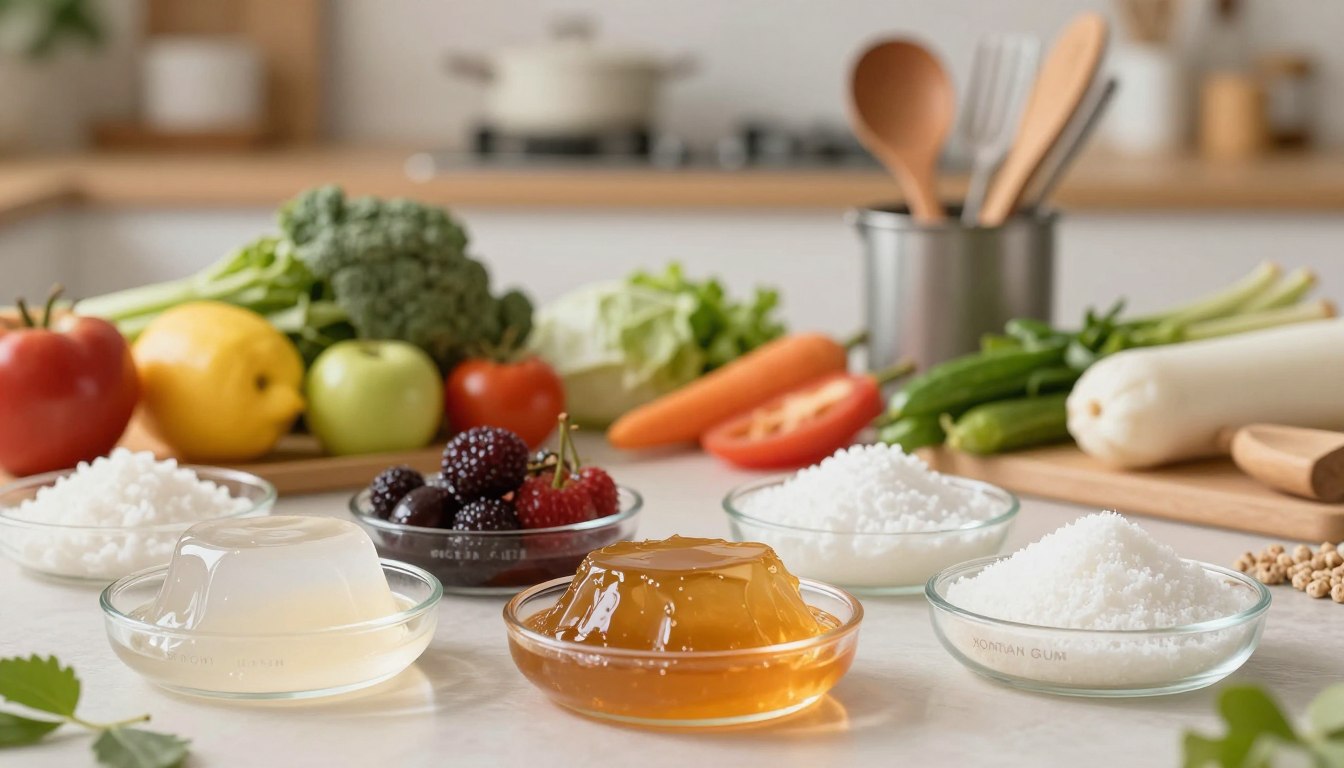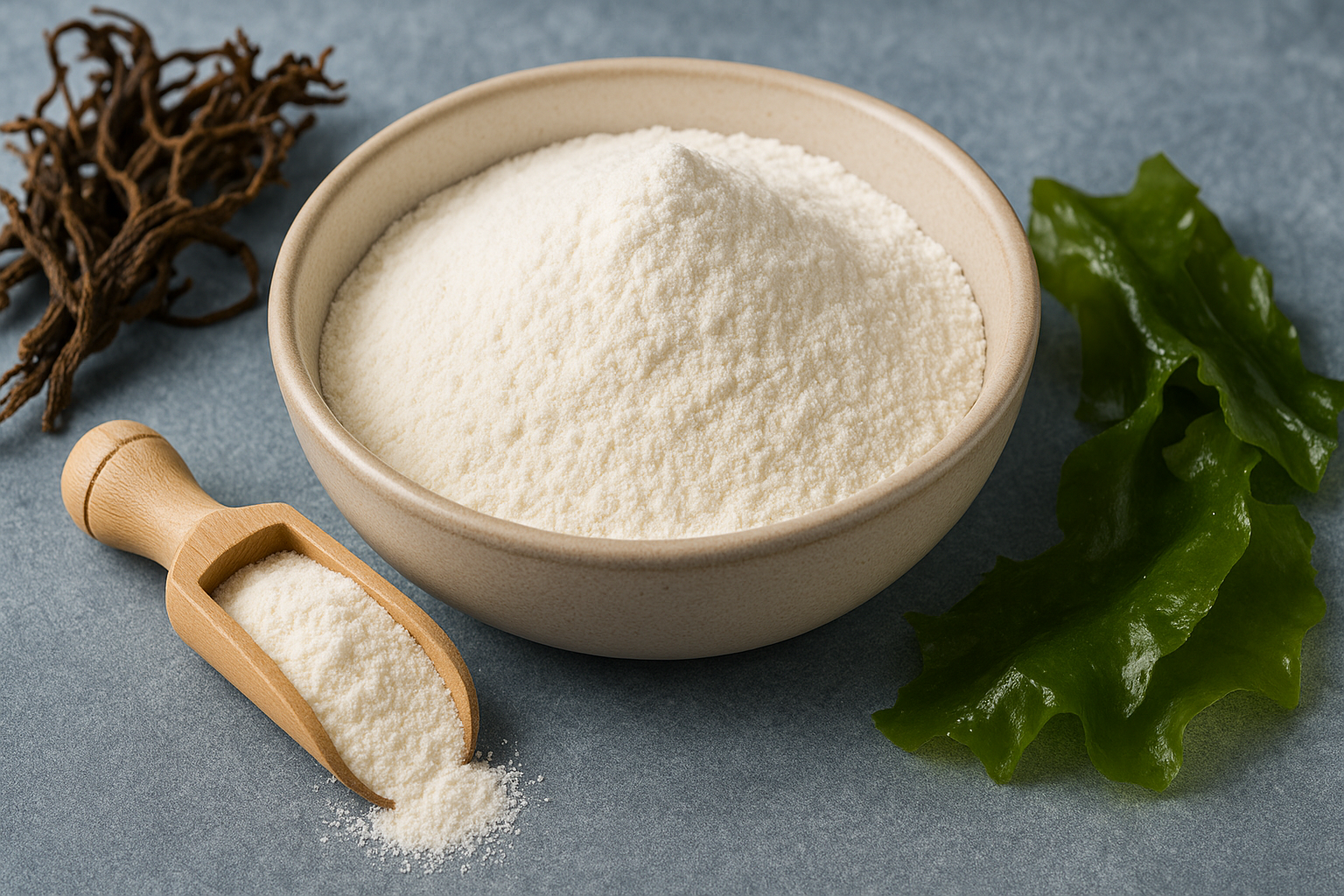
Hydrocolloid Bibliography: Essential Books, Journals & Articles
SUBSCRIBE TO OUR BLOG
Promotions, new products, and recipes.
Introduction to the Hydrocolloid Bibliography
In the evolving world of food science and technology, hydrocolloids, gums, stabilizers, and emulsifiers play a pivotal role in enhancing texture, stability, and shelf-life of food and beverages. These ingredients are essential to developing innovative formulations that meet today’s demands for clean-label, allergen-friendly, and functional foods.
To support professionals and enthusiasts alike, we’ve assembled a curated bibliography covering foundational texts, cutting-edge research, and comprehensive journals. This collection is ideal for food scientists, culinary innovators, product developers, and curious minds eager to understand the building blocks of modern food formulations.
Whether you’re diving into basic classifications or exploring the molecular interactions of hydrocolloids, this resource will guide your learning and research. Let’s explore the top sources available in this fascinating field.
For those delving into the subject, the Handbook of Hydrocolloids stands as an entry point, meticulously outlining the classifications, functions, and extraction methods of hydrocolloids. As readers journey deeper, our recent article, Those Hidden Ingredients - Hydrocolloids in Your Food is a great start. It unveils the intricate balance between stabilizers and emulsifiers, shedding light on how these agents ensure the longevity and sensory appeal of various culinary creations. The journal articles included encapsulating groundbreaking studies on the interactions between hydrocolloids and other food components, as well as the exploration of their role in addressing contemporary challenges like clean label formulation and allergen management.
In an era where innovation is spurred by the convergence of scientific insights and gastronomic aspirations, our bibliography on hydrocolloids, gums, stabilizers, and emulsifiers serves as an indispensable compass. Whether you are an academic researcher, a food industry professional, or simply an inquisitive mind intrigued by the science behind the meals we savor, this collection beckons you to embark on a journey of exploration, discovery, and culinary excellence.
Our blog has many helpful articles on the subject of hydrocolloids which one can draw upon. As an example, a recent posting, Do Hydrocolloids Qualify for Clean-Label Info? answers a number of pressing questions. Please note that more recent resources might be available, and for the most complete list, I recommend searching academic databases, online bookstores, and research journals for the most current information. Here's our current bibliography of hydrocolloid, Gum, Emulsion, and Stabilizer books, magazines, and papers:

European E numbers. The E400s include emulsifiers, stabilizers, and thickeners.
Books:
- Cellulose and Cellulose Derivatives in the Food Industry: Fundamentals and Applications, by Tanja Wuestenberg
- Emulsifiers in Food Technology, edited by Robert J. Whitehurst and Stephen R. Friberg
- Food Hydrocolloids: Structures, Properties, and Functions, by K. Nishinari and E. Doi
- Food Emulsifiers and Their Applications, by Gerard L. Hasenhuettl and Richard W. Hartel
- Food Stabilisers, Thickeners, and Gelling Agents, edited by Alan Imeson
- Gums and Stabilisers for the Food Industry, series edited by Peter A. Williams and Glyn O. Phillips (multiple volumes)
- Handbook of Hydrocolloids, edited by Glyn O. Phillips and Peter A. Williams
- Hydrocolloid Applications: Gum Technology in the Food and Other Industries, by A. Nussinovitch
- Hydrocolloids in Food Processing, edited by Thomas R. Laaman and Kaisa Poutanen
- Hydrocolloids: A Comprehensive Review, edited by A. Nussinovitch
- Hydrocolloids: Biosynthesis, Structural Modifications, and Biofunctionalization, edited by Nathalie Garti and Nissim Garti
- Hydrocolloids: Interactions with Water and Biomacromolecules, by Stephen Harding and Vanya Petkova
- Hydrocolloids: Practical Guides for the Food Industry, by Thomas R. Laaman
- Molecular Gastronomy: Scientific Cuisine Demystified, by Jose Sanchez
- The Complete Book on Gums and Stabilizers for the Food Industry, by H. Panda
Food Science Journals" src="https://cdn.shopify.com/s/files/1/1711/7499/files/journal_600x600.jpg?v=1692476700" style="display: block; margin-left: auto; margin-right: auto;">
Magazines and Journals:
- Biomacromolecules
- Carbohydrate Polymers
- Colloids and Surfaces B: Biointerfaces
- European Food Research and Technology
- Food Hydrocolloids
- Food Research International
- Food Science
- Food Science and Technology
- International Journal of Biological Macromolecules
- International Journal of Food Science and Technology
- Journal of Agricultural and Food Chemistry
- Journal of Applied Polymer Science
- Journal of Food Science
- Journal of Hydrocolloids
- Trends in Food Science & Technology
Selected Papers and Articles:
- De Vries, A. L., & Giesbers, M. (2008). Gums, Stabilizers, and Hydrocolloids. In Encyclopedia of Dairy Sciences (2nd ed., pp. 1047-1053). Academic Press.
- Dickinson, E. (2003). Hydrocolloids at interfaces and the influence on the properties of dispersed systems. Food Hydrocolloids, 17(1), 25-39.
- Glicksman, M. (2000). Food hydrocolloids: Characteristics, properties, and uses. Food Technology, 54(2), 59-67.
- Joye, I. J., & Lagrain, B. (2019). Challenges and opportunities in understanding the role of proteins in emulsifier functionality: A critical review. Comprehensive Reviews in Food Science and Food Safety, 18(4), 1209-1227.
- Komaiko, J., & McClements, D. J. (2016). Emulsions and foams stabilized by particles: A perspective on the role of particle size. Journal of Colloid and Interface Science, 462, 392-399.
- McClements, D. J. (2015). Food emulsions: Principles, practices, and techniques (3rd ed.). CRC Press.
- McClements, D. J. (2016). Food emulsions: Functionality, stability, and formulation. Journal of the Science of Food and Agriculture, 96(9), 3693-3703.
- Morris, E. R., Rees, D. A., & Thom, D. (1980). Biological and molecular properties of food polysaccharides. Pure and Applied Chemistry, 52(6), 1267-1280.
- O'Sullivan, L., & Norton, I. T. (2017). Understanding and exploiting hydrocolloid gelation for the development of novel texture systems. Annual Review of Food Science and Technology, 8, 237-257.
- Rayner, M., & Sjöö, M. (2018). The role of emulsifiers in baked goods. European Food and Feed Law Review, 13(4), 202-210.
- Williams, P. A., & Phillips, G. O. (2009). Introduction to food hydrocolloids. In Gums and Stabilisers for the Food Industry 16 (pp. 1-10). Royal Society of Chemistry.
Accessing These Resources
Some sources may require academic access or purchase through platforms like Google Scholar, PubMed, or academic bookstores. For the most current research, visit journal publisher sites or university databases.
Frequently Asked Questions (FAQs)
Q1: What are hydrocolloids used for in food?
A1: Hydrocolloids are used to thicken, stabilize, gel, and emulsify food and beverage products. They improve texture and shelf-life.
Q2: Where can I access these journals and articles?
A2: Many are available through academic databases like PubMed, ScienceDirect, Google Scholar, or through university libraries.
Q3: Are hydrocolloids considered clean-label ingredients?
A3: Some hydrocolloids like guar gum or pectin are naturally derived and often qualify for clean-label use, depending on processing and consumer perception.
Q4: What’s the best book for beginners?
A4: Handbook of Hydrocolloids is a great starting point as it covers the fundamentals in detail.
Q5: Are these resources suitable for culinary professionals?
A5: Yes! Many books and articles bridge the gap between science and culinary application, ideal for chefs, R&D, and food innovators.


|
About the Author Ed is the founder of Cape Crystal Brands, editor of the Beginner’s Guide to Hydrocolloids, and a passionate advocate for making food science accessible to all. Discover premium ingredients, expert resources, and free formulation tools at capecrystalbrands.com/tools. — Ed |
Enjoyed this post? Subscribe to The Crystal Scoop
Food-science tips, ingredient know-how, and recipes. No spam—unsubscribe anytime.
- Choosing a selection results in a full page refresh.



